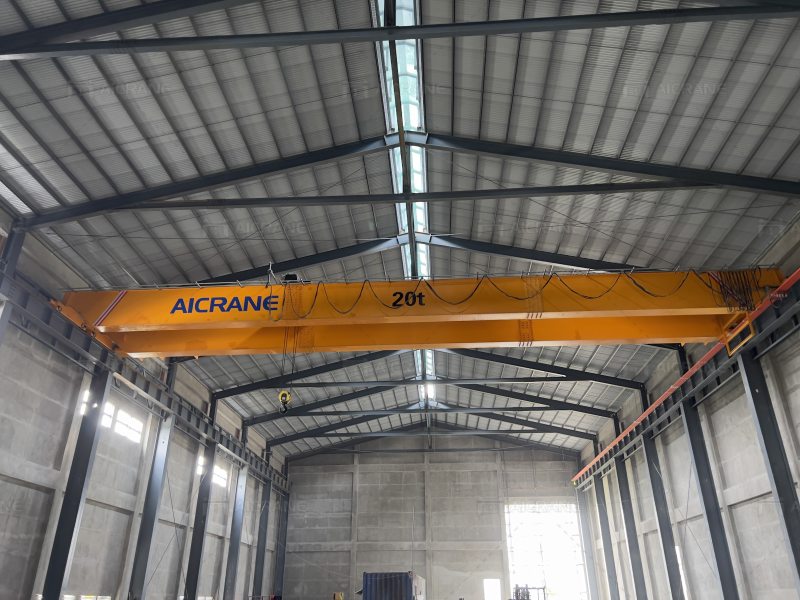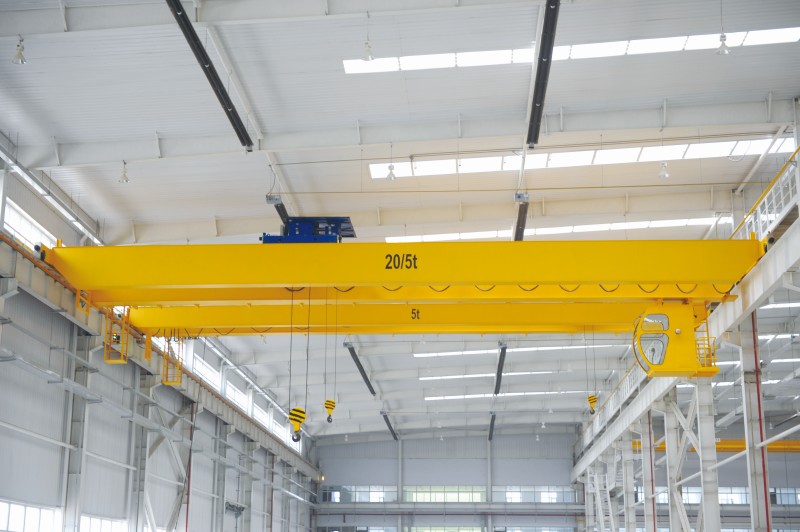In the fast-paced world of warehousing, efficiency and precision are paramount. One way to achieve this is by integrating overhead cranes with Warehouse Management Systems (WMS). This integration can revolutionize warehouse operations by enhancing productivity, improving safety, and optimizing space utilization. Here, we delve into the benefits, considerations, and steps involved in integrating overhead cranes in warehouse.

Benefits of Integration
Increased Efficiency Integrating overhead cranes with WMS streamlines material handling processes. The WMS can automatically direct the crane to pick up and move items, reducing manual intervention and speeding up operations. This automation minimizes the time taken to locate, retrieve, and transport goods, leading to faster order fulfillment.
Enhanced Accuracy The integration ensures precise tracking and placement of inventory. WMS, coupled with crane automation, can pinpoint the exact location of items within the warehouse. This accuracy reduces errors in picking and placing, enhancing inventory management and reducing discrepancies.
Improved Safety Automation reduces the need for manual lifting and transportation of heavy loads, thereby lowering the risk of workplace injuries. The system can also include safety protocols, such as obstacle detection and emergency stop features, to further protect workers and equipment.
Optimized Space Utilization With integrated systems, overhead cranes in warehouse can efficiently navigate through the warehouse, making use of vertical space that is often underutilized. This capability allows for higher stacking of goods and better organization, maximizing the storage capacity of the warehouse.
Real-Time Data and Analytics Integration provides real-time data on electric overhead travelling crane operations and inventory status. This data can be analyzed to identify patterns, predict maintenance needs, and optimize operations. Managers can make informed decisions based on accurate, up-to-date information.
Key Considerations
Compatibility Ensure that the overhead cranes and WMS are compatible. This involves checking if the crane’s control systems can communicate effectively with the WMS software. Some older crane models may require upgrades or additional interfaces to enable integration.
Customization Every warehouse has unique requirements. Customizing the integration to fit specific operational needs is crucial. This may involve tailoring the software to handle specific inventory types, adjusting crane parameters, and configuring user interfaces for ease of use.
Scalability The integrated system should be scalable to accommodate future growth. As the warehouse expands or operations increase, the system should be able to handle additional cranes, increased inventory volumes, and more complex workflows without significant reconfiguration.
Training and Support Operators and staff need adequate training to effectively use the integrated system. This includes understanding how to operate the cranes through the WMS interface, troubleshooting common issues, and knowing emergency procedures. Ongoing support from the system provider is also essential to address any technical problems that may arise.

Steps to Integration
Assessment and Planning Begin with a thorough assessment of the warehouse operations, identifying areas where integration can provide the most benefit. Define clear objectives for the integration, such as improving order fulfillment speed or enhancing inventory accuracy. Plan the integration process, outlining the steps, timeline, and resources required.
Choosing the Right System Select a WMS that is compatible with the overhead cranes and can meet the operational needs of the warehouse. Look for features such as automated inventory tracking, real-time data analytics, and ease of integration with existing systems. Consult with vendors and consider running pilot tests to evaluate the system’s performance.
Upgrading Equipment If necessary, upgrade the overhead cranes to ensure compatibility with the WMS. This may involve installing new control systems, sensors, and communication interfaces. Ensure that the cranes meet current safety standards and can operate efficiently within the integrated system.
Implementing the Integration Work with the WMS provider and crane manufacturer to implement the integration. This involves connecting the crane control systems to the WMS, configuring the software, and setting up communication protocols. Conduct thorough testing to ensure that the systems work seamlessly together.
Training and Rollout Provide comprehensive training for all relevant staff, including crane operators, warehouse managers, and IT personnel. Ensure they understand how to use the integrated system, follow safety protocols, and troubleshoot common issues. Roll out the system gradually, starting with a pilot phase to identify and resolve any problems before full-scale implementation.
Monitoring and Optimization Continuously monitor the integrated system to ensure it operates as expected. Use the data generated by the system to identify areas for improvement and optimize operations. Schedule regular maintenance and updates to keep the system running smoothly and address any emerging issues.
Integrating overhead cranes with Warehouse Management Systems is a powerful way to enhance warehouse operations. This integration offers numerous benefits, including increased efficiency, enhanced accuracy, improved safety, and optimized space utilization. By carefully considering compatibility, customization, scalability, and training, and following a structured implementation process, warehouses can successfully integrate these systems and achieve significant operational improvements. The result is a more efficient, safe, and productive warehouse environment that can meet the demands of modern logistics and supply chain management.